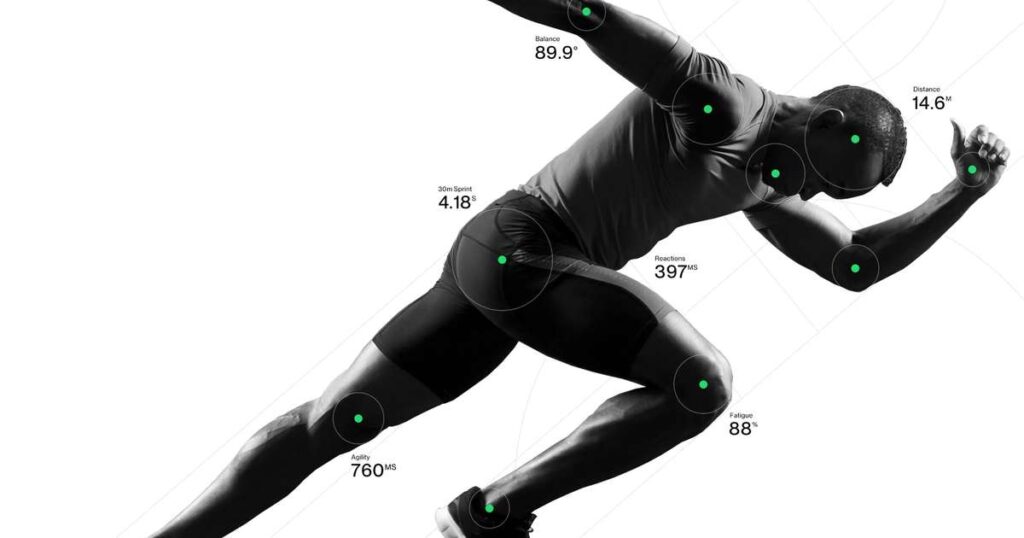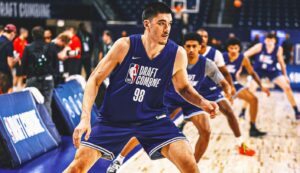Winning Moves: How Hospitality Can Score Big with AI

Having once again demonstrated its resilience in the face of long-term labor shortages, inflationary pressures and geopolitical uncertainty, the U.S. economy remains the envy of the world. However, two parallel and contradictory trends – the spread of the union contagion pushing into new sectors and the growing pull of the freelancer gig economy (which represents 56 million Americans or 36% of the workforce) – reflect elevated levels of distrust in the corporate world and all levels of government. These trends have spilled into a now turbulent technology sector which is shedding thousands of jobs being replaced by artificial intelligence, accelerating the discontinuity called a talent disruption,
the title of my book. In many traditional industries, even business leaders in touch with the times are scratching their heads and asking, Where did all the workers go?
However, there is an industry that continues to defy the odds and thrive in the labor market, with an abundant supply of talent and unit labor economics that remain favorable: professional sports.
Like hospitality and travel, the sports industry is thriving due to pent-up demand post-pandemic. But that’s where the similarities end. Unlike travel and hospitality, which have reduced their services and amenities resulting in lower customer satisfaction, or the entertainment industry, which was embroiled in long strikes paralyzing their ecosystem, the sports industry has grown its offerings and generated new revenues by leveraging its robust talent pipeline. While other industries remain stuck in defensive labor wars, the sports industry is making people the brands, generating new digital and consumer product related revenue streams. Hence, it’s worth asking, what is the sports industry doing differently with respect to human capital management? What’s their secret algorithm?
As part of our research into developing talent marketplaces, our team of data scientists analyzed data from over 3000 players in five major sports leagues based in the U.S.: Football (NFL), Basketball (NBA), Baseball (MLB) and Hockey (NHL). We went through a discovery process mapping salaries, income distribution, upwards mobility, and talent lifecycles within each league against other industries. Our team also analyzed the organizational structures, budgets and strategies adopted by the highest performing teams. The iterative process of testing uncovered a number of surprising insights. We have summarized our findings in five lessons in human capital management that corporate executives can learn from professional sports.
Lesson #1: Data Science is King. Take Your Touchy-Feely Style Somewhere Else.
The sports industry has come a long way in the 20 years after Michael Lewis’ bestselling book, Moneyball: The Art of Winning an Unfair Game, highlighted how independent analysts from outside baseball uncovered the mispricing of talent and capitalized on informal market inefficiencies. Today professional sports teams have an average of 28 full time employees focused on data science assessing human capital. The old-school touchy-feely scouting system is gone. The differences in identifying and pricing talent before and after the data science models in sports were implemented were so significant they enabled small market teams to compete effectively against their larger rivals who have 40-100x their operating budgets. Unsupervised machine learning models that incorporated new data and algorithms enabled leagues and teams to engineer meritocracy in recruiting, promoting and compensating players with math prepared by analysts who have few presuppositions and biases.
In the years since data science was implemented, unionization, team salary caps and calls for improving DEI have not negatively impacted the meritocratic systems used by professional sports teams. Over the past few decades, the sports industry has developed predictive models and advanced algorithms using the latest biomechanical data assisted by camera footage, wearable devices, and motion capture. These breakthroughs have enabled the industry to grow from 10,000 to over 10 billion data points. At their corporate offices, human capital teams build sophisticated models that track and analyze a wide range of performance data—from pitch velocity and bat speed in baseball to sprint speed and agility in soccer—providing inputs that generate a detailed assessment of an athlete’s impact on team success. Additionally, with the emergence of generative artificial intelligence, teams have been able to expand their talent scouting and performance analysis to new markets on a global scale. A prime example is the partnership between Major League Soccer (MLS) and aiScout, a sports talent discovery platform. This platform analyzes high-quality videos from individual talent profiles and drone-captured footage during games using advanced video analysis algorithms that are scaled through supervised machine learning.
The resulting insights into players’ skills and performances, including metrics like speed, acceleration, and accuracy, are shared with sports teams. These advancements are breaking down traditional barriers and opening unprecedented opportunities for athletes at all levels to pursue their dreams. In this context, artificial intelligence has evolved from being a tool to being a peer and partner in human capital innovation. Unsupervised machine learning is widening the global sports talent pipeline, allowing teams to discover more undervalued athletes and make informed decisions about investment and compensation, ensuring it is directly tied to proven on-field contributions. While industries such as hospitality continue to rely on job sites, applicant tracking systems, outdated personality tests and the biases of old school recruiters, the sports industry is using artificial intelligence to grow its talent pool and generate new revenue models in every corner of the earth.
Lesson#2: Establish Meritocracy by Paying Rising Stars Extremely Well
How does the sports industry compare with the service industries most impacted by the Talent Disruption with respect to meritocracy and income inequality? To address this question, we conducted an analysis of large datasets from the healthcare, retail, and hospitality industries. Our focus began at the foundational level, examining the income of store managers, general managers, and senior hospital managers, such as head nurses. We then compared their earnings to those of corporate executives, shareholders, and real estate owners, specifically considering the income derived solely from the business.
We computed the Gini-coefficient, a measure of income inequality within a population, such as a country or social group, for service industries compared to professional sports. The data suggests that the U.S. for profit hospital and health care delivery business, has a Gini coefficient of 0.55, which is on the higher end of the spectrum of income inequality among countries, well above the country average of 0.38. Retail also scores poorly with a Gini coefficient of 0.65, worse than South Africa, the country with the largest income inequality. What’s surprising is that when professional sports are compared to countries, inequality is off the charts
MLB’s Gini coefficient at 0.82 and the NFL and NBA following closely (see figure 1).
The industry whose inequality most resembles that of professional sports is the real estate driven hotel industry. In the case of hotels, our extensive dataset encompassed 130 hotel chains and management companies, comprising a total of 27,300 hotels nationwide. This dataset included individuals from various roles, such as General Managers, regional operators, corporate- employees, and the top 150 hotel developers and owners. The U.S. hotel industry’s Gini coefficient is an astonishing 0.73, which reflects the disproportionate amount of value being captured by shareholders, real estate and business owners, financiers and their advisors compared to those who work in the properties running the business.
Unlike hospitality, professional sports leagues have agreed to pay their players 45 to 50% of team revenues as part of collective bargaining agreements. Since 2015, median salaries have been growing 25% in the NHL and NFL, 50% in the NBA, but down 30% in MLB. But what about the distribution of income among players with similar experience and tenure?
We used a violin plot chart to analyze the distribution of income for U.S. based professional sports leagues, including the median and mean salaries earned by the average player against the highest paid elite talents (see figure 2).
[Figure 2 Salary distribution in U.S. professional sports]— Source: Mogul Hospitality Corp
In the NFL, around 2,472 (87%) players make up to $5 million dollars, with salaries highly concentrated around the median. The highest earners, including Patrick Mahomes, Ryan Tannehill, Leonard Williams, and Jared Golf earn between $18.3 and $28 million. Moreover, the NFL pays its super elite talent extremely well. The top 10 NFL players earn 10x the league average and two players – Patrick Mahomes and Dak Prescott – receive a salary of more than $40 million. Despite having a less global talent pool and fewer teams, the NFL remains the most popular sport in the U.S. in part because its super elite are extremely well compensated.
In contrast, the NHL displays the smallest gap between its mean and median average salary: 251 (45%) players make salaries between zero and three million, 180 players (32%) make salaries between three to six million. However,125 players, including Nathan MacKinnon, Connor McDavid, Auston Matthews, and Drew Doughty (22%) make above $6 million with the top 10 players earning between $10.5 million and $12.6 million or 3-5x the league average.
The take-away is that the talent market in sports is ruthlessly efficient in capital allocation with near perfect information, transparency, and the critical reporting of an engaged media. Team owners, employees and the public recognize that winning teams require the absolute best players to be paid like CEOs, rendering inequality an institutionalized best practice. In contrast, most corporate boards, unions, and bureaucracies often look for ways to achieve pay equity rather than compensate their stars 8-10x their average performers at the same level of the organization. Similarly, the gig economy’s value proposition powered by machine learning applications, is using technology to power a meritocracy where talents can earn more quickly by receiving positive reviews, achieving elite talent tiers, and leveraging their success to become influencers with personal brands.
Thanks to data science and artificial intelligence that sources and ranks talents, sports and the gig economy have established fair and open talent markets, leapfrogging traditional industries such as hospitality to become the largest meritocracies in America.
Lesson#3: Use Artificial Intelligence to Determine a Talent’s Worth
With respect to pay for performance, professional sports teams such as the NBA use analytics to assess key drivers of revenue production such as attendance, sponsorship, content and advertising and playoff optionality to generate the net present value (npv) or lifetime worth of a player. Each player’s value is situational and determined based on the context of a specific team, considering a player’s marketability and leadership role in developing talent. A player’s worth can be compared to his or her replacement value and adjusted for injury risk.
In recent years, fantasy sports websites have empowered fans to compute a player’s value above replacement, transforming this analysis into tangible metrics, such as betting dollars. For instance, one such metric gaining prominence in fantasy baseball circles is Standings Gain Points (SGPs). SGPs offer a standardized measure to evaluate a player’s impact on a team’s standings in the league, particularly for statistics measured by ratios or averages like batting average or earned run average.
To illustrate, let’s consider the formula for calculating SGPs for batting average in fantasy baseball:
SGP BA = (Player BA−League AVG BA) × Conversion Factor BA
Where:
- PlayerBA represents the player’s projected or actual batting average.
- League AVGBA denotes the league average batting average.
- Conversion FactorBA is the factor used to convert the difference in batting average into a standardized unit (e.g., points).
By utilizing SGPs, fantasy baseball enthusiasts can effectively gauge a player’s value above replacement and make informed decisions when managing their teams. This data-driven approach underscores the importance of employing data science methodologies over traditional consulting reports when assessing talent worth in sports. In contrast, legacy service industries such as hospitality use backwards looking consulting studies and job sites to benchmark compensation, often purchasing data from the same sources that treat human capital purely as a cost. They fail to adjust these generic datasets for context such as degree of difficulty, product quality and competitive factors that could help determine if an employee is a clutch performer or an overvalued asset who has benefited from easier assignments and other economic factors.
Lesson#4: Cycle Rising and Elite Talent Frequently to Power Meritocracy
How fluid and dynamic are the talent markets in sports compared to hospitality and other traditional industries? Leagues imposed salary caps of $123 million per team in the NBA and $224.8 million per team in the NFL, $82.5 million in the NHL have leveled the playing field
between teams and reduced income inequality among players. As the only league without a salary cap, MLB has the most unequal distribution of income across its players, with the top 10 players earning above $32.5 million, which is 7.8x the average compensation per player. To gage upwards mobility, we plotted player compensation by league in a Lorenz curve that provides a graphical representation of the economic inequality model with the population percentile on the X-axis and the cumulative wealth on the Y-axis (see figure 3).
[Figure 3 Salary distribution by population in U.S. professional sports]— Source: Mogul Hospitality Corp
In the NBA, the top 10 players, such as Stephen Curry, Kevin Durant, Nikola Jokic and Lebron James earn more than $45 million while more than 50% of NBA players receive salaries lower than the $5 million average. Moreover, the NBA has an exceptionally dynamic talent engine. The top 10 highest compensated players change every seven years by 60% and every decade by 90%. In other words, the NBA does a remarkable job of cycling its human capital investments in and out of the league, mirroring results seen in the gig economy and social media.
Furthermore, upwards mobility has also generated social legitimacy in the eyes of the talent pool. With over 50% coaches being people of color (up 4x over the past 25 years), the NBA has also expanded its talent pipeline and established a new league in Africa. While skeptics argue that the career lifespan of professional athletes is relatively short, the equivalent path to upwards mobility from front-line employee to C-suite is an average of 30 years in service industries such as hotels, where it takes an average of 12 years just to become a General Manager. In contrast to athletes or influencers, hotel GMs are paid on linear factors such as brand segment and market size. The top 1% of hotel GMs, who are 40% better than their peers, earn only 25% more than the lowest decile (see figure 4). Moreover, despite their critical role in economic value creation, hoteliers rarely if ever share in the operating profits or real estate appreciation of the billions of dollars of real estate assets they manage on behalf of institutional investors, private equity, and family offices.
Lesson#5: Use AI to Develop Talent from Farm to Table
Next, we turn our attention to talent acquisition, learning and development. Sports teams draft players from high school and college into their vertically integrated minor league farm teams.
These minor league teams cultivate rising talents and remodel professionals with new skills and renewed confidence. The most successful sports organizations build 20% of their stars through this owned and operated farm system.
Unfortunately, the business model in hospitality is going the other way: franchising is fragmenting the workforce as 5 out of 6 people work for third party managers contracted by real estate owners. Given skyrocketing costs, the ROI on a bachelor’s degree in hospitality is over a decade, leading to declining enrollments and higher attrition, while most community colleges are limited to teaching hospitality trades like culinary arts.
Generative artificial intelligence has the potential to change this predicament and give rise to a new talent ecosystem. Hospitality companies could build bench strength and compete more effectively with the gig economy by building AI powered talent scout apps and establishing talent sharing deals to create an ecosystem of employers. AI could be used to identify skills gaps in the workforce and employers could be compensated for training and developing rising talents for each other. For example, Hyatt could partner with Chef Daniel Boulud to develop its culinary talent in French cuisine, and they could train his future managers in accounting and finance of restaurants and catering.
A more radical innovation is Talent Sharing. Rather than working for a company, talents join a network of employers where they can choose to be trained and work. For example, Hilton could work with Starbucks and Mayo Clinic – to enable culinary and restaurant management talent to be ranked, put into tiers, priced, and moved between relevant brands and properties. After they have completed their training and demonstrated their worth, elite talents could have the option or right to become free-agents and receive bids from multiple employers in the network.
Owners and franchisees can also lead the way in human capital R&D by pushing profit sharing down to the front-line. They can leverage AI to inexpensively source talent off the beaten path and experiment with floating wages that reflect supply and demand like gig apps in hospitals that use yield management to determine wages for nurses. Franchisees who are owner-operators can also build shared talent networks with each other to offer career paths.
Some argue that if hospitality invests in AI similar to sports, it will exacerbate inequality and put millions of people out of work. But with millions of unfilled positions rendering businesses incapable of meeting demand, hospitality leaders should leverage artificial intelligence to build a new factory operated by fewer and more productive employees who are well-compensated. It starts with adopting the best practices of the sports industry and leveraging AI to scale human capital and score big.
Alexander Mirza
Founder & Chief Executive Officer
Mogul Hospitality Corp





![[Figure 1 Inequality in Different Industries]— Source: Mogul Hospitality Corp](https://www.hospitalitynet.org/picture/xxl_153170094.jpg?t=1717137414)
![[Figure 1 Inequality in Different Industries]— Source: Mogul Hospitality Corp](https://www.hospitalitynet.org/picture/153170094.jpg?t=1717137414)
![Source of data: www.spotrac.com
[Figure 2 Salary distribution in U.S. professional sports]— Source: Mogul Hospitality Corp](https://www.hospitalitynet.org/picture/xxl_153170095.jpg?t=1717137446)
![Source of data: www.spotrac.com
[Figure 2 Salary distribution in U.S. professional sports]— Source: Mogul Hospitality Corp](https://www.hospitalitynet.org/picture/153170095.jpg?t=1717137446)
![Source of data: www.spotrac.com
[Figure 3 Salary distribution by population in U.S. professional sports]— Source: Mogul Hospitality Corp](https://www.hospitalitynet.org/picture/xxl_153170096.jpg?t=1717137479)
![Source of data: www.spotrac.com
[Figure 3 Salary distribution by population in U.S. professional sports]— Source: Mogul Hospitality Corp](https://www.hospitalitynet.org/picture/153170096.jpg?t=1717137479)
![[Figure 4 General Manager Salary by Score in Top 5 U.S. Markets]— Source: Mogul Hospitality Corp](https://www.hospitalitynet.org/picture/xxl_153170097.jpg?t=1717137512)
![[Figure 4 General Manager Salary by Score in Top 5 U.S. Markets]— Source: Mogul Hospitality Corp](https://www.hospitalitynet.org/picture/153170097.jpg?t=1717137512)







